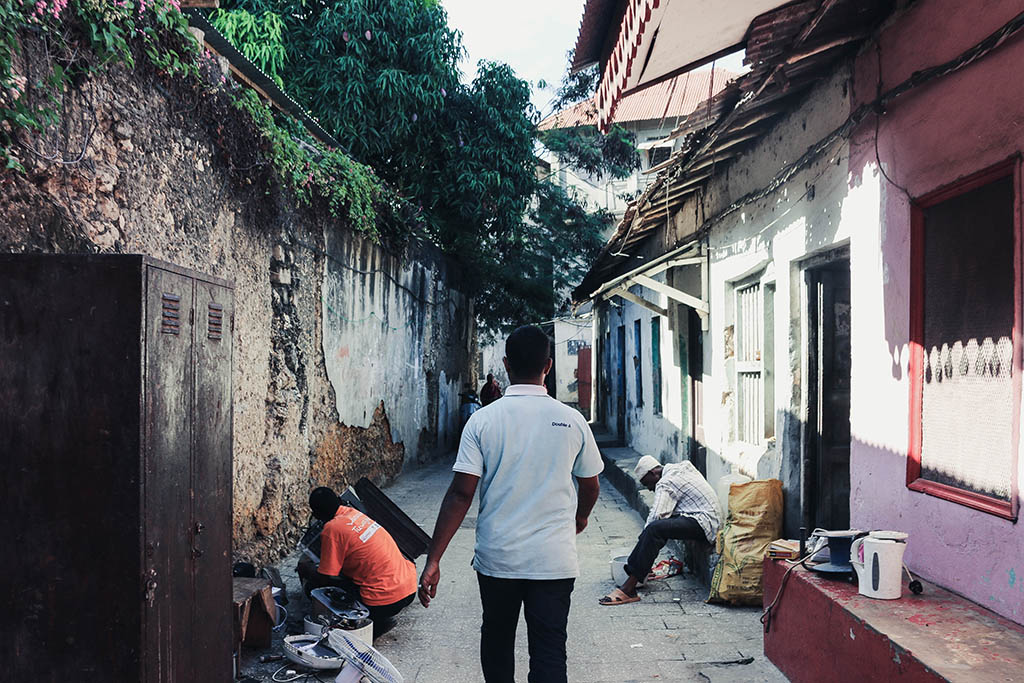Strolling through the maze of narrow streets, savoring the culture and admiring the rustic storied (though crumbling) architecture, I’m reminiscing about my trip to the enchanting Zanzibar’s Stone Town back in December 2016 when I took an unplanned trip (was a ferry ride away) and then back again 3 months later. Currently bogged down in a monotonous 8-5 office routine, I am making a conscious effort to remember this eventful trip(s) which now seem to have taken place an eternity ago.
A UNESCO World Heritage Site, Stone Town typifies the historic Swahili coastal trading towns of East Africa. Walking through Zanzibar alleyways you will be able to glance back in history and find some remnants of the Swahili civilization, which in its heyday ruled supreme in this part of Africa.
Beit-al-Ajaib aka House of Wonders was built in 1883 by Sayyid Barghash, the third Sultan of Zanzibar. The palace, was intended to be a ceremonial one celebrating modernity.
The best way to explore Stone Town is by foot, the streets are too narrow for cars. Getting lost especially for visitors is commonplace but possibly one way to discover this gem of a town. There were many locals willing and eager to take us (was accompanied by my friend) on a guided tour, for a wide range of prices. Most of these locals however are not professional guides and are just trying to make a quick buck. Our guide a native of Zanzibar definitely knew his way around; a certified guide who had studied tourism evident from the badge carried around his neck. His knowledge of the smaller details of some of Stone commonplace architectural features as well as the overall historical picture made for a fascinating tour.
The architecture speaks of many layers of a rich and varied history. Arab mansions with high, blank white walls sit next to the lacy wooden balconies and colorful stained glass windows of grand Indian residences. The famous Zanzibari doors with brass meticulously carved in mahogany and teak grace the front of almost every building of note. Brass spikes another distinctive feature of Zanzibari doors is an import from India, owing much to the Havelis of Gujerat, homeland of many of Zanzibar’s wealthy Indian merchants. The brass was used as a defense against war elephants that would batter down fortified doors in the tribal wars of Punjabi history. Needless to say, this distinctive feature of Stone Town’s doors has always been purely decorative.
There’s no shortage of picturesque buildings in Zanzibar’s Stone Town. St Joseph’s Cathedral is one of my favorites
If there’s one thing I didn’t expect to do a lot of in Old Town was shopping. Darajani market is one of the places you go shop for produce. There are other small shop if you are interested in shopping for curios.
I’m not super keen on souvenirs but I couldn’t help but get a water color painting reminder to hang on my wall.
Just in case you were wondering what matatus in Zanzibar look like… needless to say I wasn’t brave enough to get into one
No trip to Zanzibar Stone town is complete without a visit to the Forodhani street food market, a large open air market with lots of food stalls gathered on the promenade. Every evening vendors set up an insane variety of every iteration of sea food and Swahili delicacies. The stands are extremely popular with locals and visitors alike. If you are a ‘certified’ foodie this gastronomic paradise is not to be missed.
Take me back to Forodhani Gardens…The land of delicious street food
Thinking of visiting Zanzibar? Of course, the beaches in Zanzibar are out of this world, but Stone Town is equally captivating. I had the most amazing time, the few days I spent exploring the town were an absolute delight!



































1 Comment
Such great tips! I have been to Africa 4 times but never made it to a safari. I would love to go someday! Great city’s street photos of Zanzibar, surely amazing.